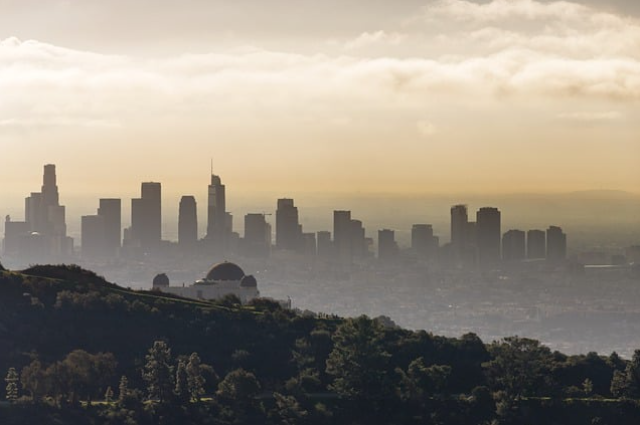
Whenever we switch our calendar page from November to December it feels like birds are chirping, Sun will play hide and sick with their friend and Cloud is always trying to hide Sun's face with his naughty act. Most important all trees are blooming with flowers. Red yellow and pink flowers are everywhere. So much of activities are associated with winter. This type of image has been created in our mind and it's too beautiful. It's like someone has made a canvas on our nature plate.
But This morning when I woke up in the metro city I felt oh wow what a scene outside our balcony. Full off foggy and visibility is almost 20 percent. I went outside and try to smell the fresh air with fogy and moisture in the environment.
Suddenly I felt it was not fog it was smog which is harmful to our health. Then I realize winter is not like that. It's polluted now.
What is Smog? While reading this article this question will be on your mind. Yeah, I know. So First I want to tell you that Smog is a type of Air which is mixture of Particulate matter. That is Nitrogen, carbon, and other harmful gas which is emitted by Factories, Vehicles, and household activities. During winter, the atmospheric conditions can contribute to the formation and trapping of smog, making it even more dangerous.
How this will impact our health??
While smog may appear as a faint haze in the distance, its effects can be very real and very dangerous
1)Health Risks: The particles in winter smog, such as PM2.5, are incredibly small and can travel deep into your lungs and bloodstream. These microscopic particles can trigger a range of respiratory problems like asthma, bronchitis, and chronic lung conditions. If you already suffer from conditions like heart disease, smog can also increase your risk of heart attacks and strokes.
2)Reduced Visibility: Smog is not just dangerous to breathe, it can also make driving and walking a risk. Dense, lingering smog reduces visibility, creating hazardous conditions on the roads. Car accidents and poor driving conditions become more common as smog cuts down the distance you can see, especially in busy, urban areas.
3)Damage to Ecosystems: Smog doesn’t just affect human health. Plants can also suffer when smog levels rise. Ozone—a common ingredient in smog—damages crops and trees by interfering with their ability to photosynthesize and grow. For agriculture, this can mean a loss in crop yield, and for ecosystems, it can disrupt the natural balance.
Is there any mitigation of smog in winter?
Yes, why not there is always a solution to the problem if we can implement it. Addressing the issue of winter smog requires a combination of public policy, technological innovation, and individual action. Here are some strategies to reduce the impact of smog during the colder months:
1)Improved Energy Efficiency: Encouraging the use of energy-efficient heating systems, as well as renewable energy sources like solar or wind power, can significantly reduce emissions from heating
2)Cleaner Transportation: Encouraging the use of public transport, cycling, and electric vehicles can help reduce the emissions from cars and trucks, which are major contributors to smog. In many cities, restricting car use on particularly smoggy days can help improve air quality.
3)Regulating Industrial Emissions: Tightening regulations on industrial emissions, particularly in areas that burn coal or fossil fuels for heating, can reduce the release of harmful pollutants into the air.
4)Wood-Burning Alternatives: Promoting the use of cleaner alternatives to wood-burning stoves and fireplaces, such as electric heaters or gas-powered options, can reduce the particulate matter that contributes to smog.
5)Public Awareness and Alerts: Governments and health organizations can issue air quality alerts during smog-prone times, advising people to stay indoors and limit outdoor activities. Raising awareness about the sources and health impacts of smog can encourage individuals to make environmentally conscious decisions.
Winter Smog is a hidden danger in cold weather. And this hidden danger is out of control in Mumbai and Delhi. We need to take care of our weather for our health and future. If we are not taken seriously then our pink winter, yellow winter, and beautiful winter will be dangerous for us.
Conclusion :
While winter may bring many joys, it also creates the conditions for hazardous smog, particularly in urban areas where pollution levels are already high. Understanding the interplay between winter weather and air pollution is essential for tackling the public health and environmental risks associated with smog. By implementing solutions that address energy use, transportation, and industrial emissions, it is possible to reduce the harmful effects of smog and improve air quality during the winter months.
Happy Winter, Take care.
